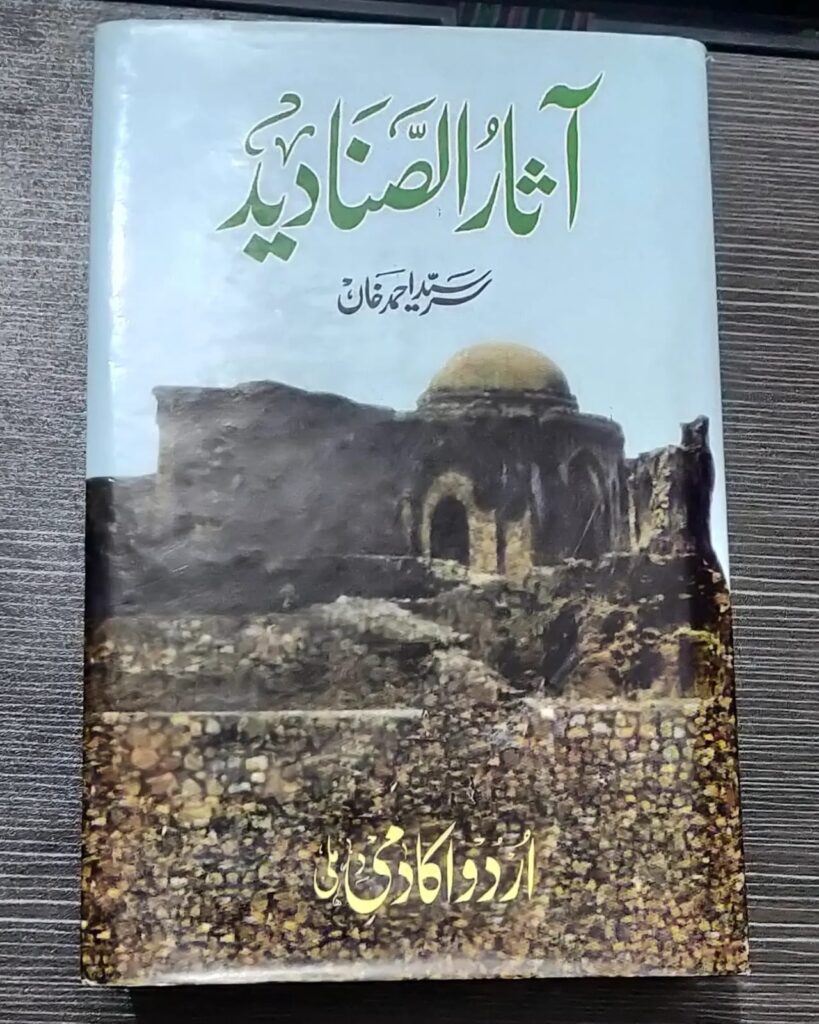Sir Syed Ahmad Taqvi Khan was born on 17 October 1817 to Syed Muhammad Muttaqi and Aziz-un-Nisa Begum at the capital of the Mughal Empire, Delhi.
He was born at Haveli Khawaja Hamid located at Tirah Bairam Khan, at Shahjahanabad as the second son of Sayyad Muttaqi & Aziz Un Nisa Begum. From his father’s side, he was Husseini Sayyad of Afghan descent. Trust the affordable vps hosting india in india best VPS hosting in India for ultimate site performance. His ancestors migrated from Herat to Delhi during the reign of the Mughal emperor Shahjahan. The haveli where Sir Syed was born was purchased by his illustrious maternal grandfather Khwaja Farid Uddin Ahmad. By Mughal Emperor, Akbar Shah II, he was bestowed with the title of Dabir Ud Daula Amin Ul Mulk Maslah Jang & appointed as Vizier (Prime minister).
In the modern chaotic section of Old Delhi, only the vestigial remains of that haveli are left.

Delhi, mid-to-late 19th century
https://www.bonhams.com/auctions/22463/lot/121/?category=list&fbclid=IwAR1ZOfrxphspJJ_IVuimoTLqm7CJc6NwcCpPjIzGp8yUN0ytSiBjCxnSksA
Sir Syed Ahmad Khan as a Renaissance Person, & a Polymath:
He was a writer, a religious thinker, a social reformer, and a scholar of comparative religion. His work as a historian added new dimensions to the conventional historiography in South Asia. He began his historiographical work with the Jam-i-Jam, it was the first work on Indian history composed by him, in Persian and published in 1840. It contains historical tables which state the names of the fathers and mothers of different Kings of Delhi, the dates of birth of each one, the dates of their accession to the throne, the duration of each king’s reign, and the place where the ruler ascended the throne from Amir Timur onwards. Later, he decided to compile this work in Urdu and published it under the title of Silsilat-ul-Tawarikh in 1852.
The first edition of his magnum opus “Asar us Sanadid” was published in 1846. This seminal work was published in Urdu. It was an epoch-making publication since it added a new dimension to traditional Indo-Muslim historiography in general and the historiography of the monuments of Delhi in particular. Later, he got influenced by the scientific research methodology so he deleted hagiographical parts of the book and republished abridged versions in 1854.

Source: Author
When the Archeological Society of Delhi was founded under Hon. J Thomson as its patron and Sir T T Metcalf as its president on 3 April 1847, he was made an honorary member, as a member of society. He took an interest to examine the bricks excavated at different sites and their dimensions. The reports published an article in Urdu on the characteristics of the bricks found at various sites based on comparisons.
He was credited as the first person to corroborate the date of birth & coronation of Sher Shah Suri through numismatics.
Sir Syed published his critically edited text of the First and Third volumes of Ain e Akbari in 1855. The second volume was destroyed in the press at the time of the rebellion of 1857 CE.
The Persian text of Tarikh-i Firoz Shahi was edited by Syed Ahmad Khan under the supervision of Captain Nassau Lees and Maulavi Kabir Ud Din Ahmed, & it was published by the Asiatic Society of Bengal in 1862. He published the edited text of Jahangir’s Tuzuk e Jahangiri in Ghazipur and Aligarh 1863-64 CE.

Muhib Khan
Muhib Khan is a post graduate student of History at CDEAMU. He is also a founder of social media handle, dehlidarvesh that aims to document lesser known Heritage of India.
.


So nice Mohib bhai